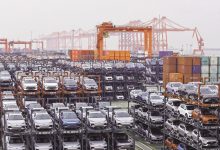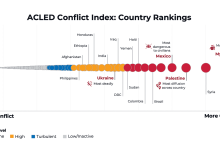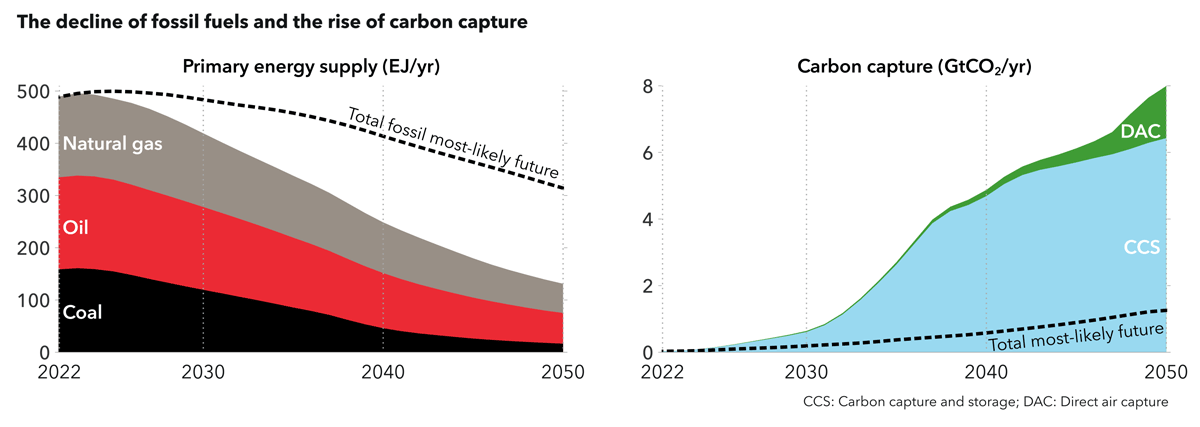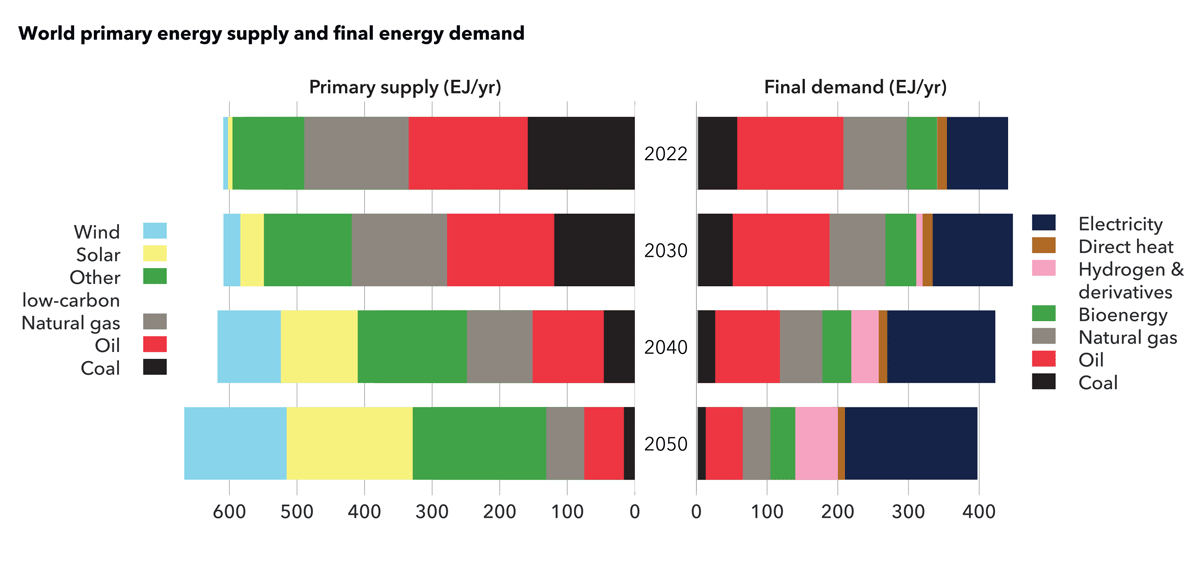Net Zero by 2050: Can We Do It?
According to scientific research, we’re now “doomed” to achieve a net-zero energy system come 2050, or completely forget about limiting global warming to a decent 1.5 degrees. Seeing as emissions are still at an all-time high, and they are set to peak in 2024, our chances of hitting that target seem small. But not impossible. Enter the Net-Zero Industry Act and subsequent scenarios. Let’s see what’s what.
The Net-Zero Industry Act
The European Green Deal Industrial Plan was announced by President von der Leyen in January 2023. The premise was pretty simple: Europe will continue to lead the path to climate neutrality via clean technology investments, based on four key pillars: skills, open trade for resilient supply chains, faster access to sufficient funding and a predictable and simplified regulatory environment.
Thus, The European Commission would have to apply all the relevant national and regional tools and improve the investment conditions that would safeguard the EU’s competitiveness and resilience.
Accompanying the Net Zero Industry Act, we were also introduced to the Critical Raw Materials Act which should ensure sufficient access to rare earths, vital for manufacturing key technologies, and for the electricity market design reform, which would guarantee consumers benefit from the lower costs attributed to renewables.
For the moment, let’s focus on the Net-Zero Industry Act.
As of 16 March 2023, The European Commission put forward the above-mentioned act, NZIA, in short. In theory, it should help us accelerate the transition to climate neutrality, by both enhancing the manufacturing capacity of net-zero technologies and taking down barriers in the way of scaling up manufacturing capacity in Europe. The result should come down to an increased competitiveness of the EU’s energy resilience and a more competitive net-zero technology industrial base. Of course, the proposal falls neatly in line with the Fit-for-55 and REPowerEU objectives.
Should all this come to fruition, we would be the proud owners of an affordable, sustainable, clean, and reliable energy system. At the same time, there would be no risk of replacing our reliance on fossil fuels from Russia with other strategic dependencies which could negate our access to components and technologies necessary for the green transition.
According to the regulations, there will be a hard line between net-zero technologies and strategic net-zero technologies. The latter should make an important contribution to the decarbonisation process come 2030, as they are commercially available or soon to hit the market. Even though all net-zero technologies will profit from the regulations cited, the strategic net-zero technologies will enjoy additional benefits: the resilience criterion in auctions and the marked possibility of becoming net-zero strategic projects.
Such projects might be granted priority status, as in shorter timelines, based on the following criteria:
- The level of technological readiness
- The contribution to competitiveness and decarbonisation
- The resilience of the energy system
According to an update made by the Council, the number of strategic net-zero technologies has been increased from 8 to 10. It now includes the following items:
- Solar photovoltaic and solar thermal technologies
- Onshore and offshore renewable technologies
- Battery/storage technologies
- Heat pumps and geothermal energy technologies
- Electrolysers and fuel cells
- Sustainable Biogas/Biomethane technologies
- Carbon Capture and Storage (CCS) technologies
- Grid technologies
- Nuclear fuel
- Sustainable alternative fuels
The benchmark put forward by the proposal envisions that the manufacturing capacity of strategic net-zero technologies will meet, at the minimum, 40% of the EU’s annual deployment needs by 2030. This should enable manufacturers and investors to track the progress predictably. The Act also sets a target of 50 million tonnes of annual CO2 storage capacity, in an effort to both enable and facilitate carbon capture and storage projects, but also increase the availability of CO2 storage come 2030.
However, this should not affect the Member States’ right to freely determine either their own energy mix, nor the allocation of funds from the EU during the current multiannual budget.
In order to create the necessary conditions that facilitate investments, the NZIA will address the core drivers of the net-zero technology manufacturing via the following measures:
- Supporting innovation with the help of regulatory sandboxes
- Ensuring access to information
- Streamlining the administrative requirements and facilitating permitting, to lower the administrative burden for said projects
- Facilitating access to markets in auctions and public procurement
- Supporting schemes aimed at driving private demand by consumers
Of course, all this would not be possible without a sizeable skilled workforce. We’re talking about dedicated training programmes via the Net-Zero Academies and portability of qualifications in regulated professions. The goal of each academy, each focusing on one net-zero industry technology, will be to individually train 100.000 candidates, within three years of being established.
Stakeholders will also have access to a Net-Zero Europe Platform where the Commission and EU countries will discuss, exchange information, and gather input. This platform will also serve as a hub for advice on financing net-zero strategic projects.
The Act also brings forth a coordinated European roadmap that will position the economy right on track to climate neutrality.
And, speaking of hopeful scenarios…
The Net Zero Emissions by 2050 scenario: What we know
According to this normative scenario, there is a clear pathway for the global energy sector to achieve net-zero CO2 emissions before 2050, but developed economies should reach this point in advance of others trailing behind. Other key components of this scenario are meeting key energy-related Sustainable Development Goals, for example the universal energy access come 2030, and marked improvements in air quality globally. It also falls in line with limiting the global temperature rise to 1.5 degrees, as per the Intergovernmental Panel on Climate Change (IPCC)’s Sixth Assessment Report.
All this should theoretically be possible by deploying a varied portfolio of clean energy technologies, no offsets from land-use measures. Also, an orderly transition, based on strong and collaborative policies and incentives, should safeguard energy security, and enable all actors to rapidly anticipate the required changes and minimise the markets’ volatility and stranded assets. It all comes down to a rapid deployment of energy efficiency and clean energy technologies.
Even though the Scenario is based on a detailed analysis, there is an inevitable risk of emerging bottlenecks in regard to some technologies. Thus, measures to enhance material reuse and recycling, but also driving down of the material intensity of clean energy technologies will be paramount.
One thing is certain: it won’t happen without global cooperation. Everyone will need to contribute in order to collectively achieve the desired outcomes, but we’re expecting that advanced economies will take the lead and reach net-zero earlier than envisioned in the scenario. Emerging markets and developing economies will just have to catch up. But, seeing as global access to clean cooking and electricity will be achieved by 2030, these developing economies and emerging markets should be able to benefit from the major and rapid CO2 reductions.
Global collaboration will mean different things. For one, it will facilitate the development and adoption of ambitious policies. Second, it will drive down clean technology costs. Third, it will scale up the diverse and resilient supply chains for the clean energy technologies and critical minerals.
However, a critical part will also be played by the financial support required to enhance the developing economies and the emerging markets. No one gets left behind, or the goal is not going to be achieved.
Now, speaking about achievements, the NZE Scenario should be understood as a possible path to net-zero emissions at a global level by 2050, but not THE path. Seeing as in recent years the energy sector has been responsible for around ¾ of GHG emissions, achieving the scenario will not rely on actions beyond the energy sector, but to truly limit climate change, such actions will indeed be necessary.
As a result, we should additionally pay attention to the reduction of CO2 emissions from land use. These should correspond in size with the transformation seen in the NZE Scenario for the energy sector.
But is the Net Zero Scenario realistic?
Theoretically, the target is, as of right now, within the bounds of political and technical feasibility. It also matches the current context of economic growth forecasts. However, time couldn’t be more important, as immediate and, above all, pragmatic action will certainly be the key differentiator.
But, according to the DNV 2023 PATHWAY TO NET-ZERO EMISSIONS, almost all official net-zero objectives, be they legislated, proclaimed, or officially included in policy documents, should arrive at least a decade earlier than the stated dates.
Apparently, we’re in for some tough choices: accelerating the build-out of renewable resources and mercilessly cutting fossil ones. What’s more, all of this seems to be quite affordable, despite fears from most decision makers.
While still highly improbable, this scenario is achievable. It seems likely that some regions will indeed reach net-zero by 2050, but that won’t be enough for a global net-zero goal. The question we most pose is not “how”, but “when”.
Actions required by the Net Zero scenario
While the public and politicians agree on the importance of real actions, we’ve yet to see some clear and set initiatives, with a few exceptions. The counter forces include, but are not limited to fossil-fuel subsidies, corruption, a lack of short-term priorities, lack of global cooperation, energy system inertia, corporate greenwashing, policy reversals and even resistance from some vested interests.
On top of that, while emissions reductions or affordable and clean energy are great for the climate action agenda, some goals seem to be in direct opposition with it. For example, the replacement of traditional biomass with natural gas would avoid indoor air pollution but would hinder progress towards net-zero. The same goes for protecting nature by disallowing acreage for new renewable energy build-out.
Seems we’re in for a balancing act, and the only way forward will be represented by holistic planning and careful policymaking.
And since we mentioned policy, let’s start with it.
Political decisions
We’ve already mentioned one Act, so we won’t dwell too long on this topic. However, what stands true for Europe is also valid for the rest of the world: there will be no significant change without international collaboration and public support towards various initiatives. That’s why we need to push forward on educating the public on the positive aspects of climate action and take into account the public perception regarding interventions such as fossil-fuel taxation or subsidy reforms.
According to the above-mentioned report, the best way to achieve net-zero will be through a combination of mandates, incentives and disincentives and continued R&D that will sustain decarbonization solutions and their deployment at scale across regions and sectors. As such, carbon removal technologies will be paramount both for remaining emissions and for compensation for the carbon budget overshoot emissions.
Of course, carbon pricing will remain essential, both as a means to disincentivize emissions and to divert direct spending and investments out of emission-intensive alternatives. It will also continue to serve as a central instrument of funding net-zero spending.
Transformations in the energy system
In order to reach the net-zero goals, the primary energy supply mix come 2050 should be very different from what’s happening today. For example, fossil fuels should retain just a 20% share, as opposed to 80%, as it stands in the present.
For that to happen, coal should be almost entirely phased out of the mix. Lagging regions, such as the Indian Subcontinent or Greater China, would still use it for manufacturing, but would later see to it that coal is finally removed from the equation. Oil can’t be eliminated, especially in aviation, but we should limit its use in the road sector, at least in developed countries where the charging infrastructure should be fully built by 2050.
Speaking of oil, it will retain a large amount of residual use, along with gas, in the non-energy sector, where it will not cause any direct emissions. Increasing electrification of commercial and residential heating and cooking will also help with the gas decline.
In this scenario, wind and solar should provide more than half of the primary energy supply. The intermittency challenge related to solar energy should be partially resolved by installations that combine solar PV with storage, which will allow accessing higher capture prices when supply is lower (at night). 40% of grid connected solar installations should be co-located with storage come 2050. Let’s not forget that solar PV systems can also be installed on rooftops, thus optimizing land use.
By 2050, wind should be the second-largest primary energy provider, its supply higher than all fossil fuels combined. It would also be the largest grid-connected electricity source. The scenario focuses on three categories, namely the floating offshore, onshore, and fixed offshore. Each would increase its share in the electricity generation mix, but floating offshore would only make it to a meagre 2.5% share in electricity generation come 2050.
Bioenergy should also reach a 15% share by 2050, as mandates and regulations aim at replacing natural gas with emission-friendly biomethane, where appropriate. For example, even in hard to abate sectors such as aviation, heat-only plants, or manufacturing.
Hydropower inches away to a 4% share in the energy mix, and nuclear power more than doubles, in order to reach 10%, come 2050.
Carbon capture will remain essential as long as fossil fuels remain part of the mix, with the Scenario seeing coal emissions reduced by 97%, and gas emissions by 85%. Despite continued use, oil emissions should stabilize around 76% by mid-century.
By 2050, more than a fourth of global hydrogen and synthetic fuel will be used for industrial heating, with pure hydrogen accounting for 7% of road transport energy demand. Also, around 15% of hydrogen production should go to hydrogen derivatives as fuel.
Electrification, combined with a fast decarbonization of the power mix, will still be the prime factor of driving down emissions. As such, the global electricity demand should triple come 2050. It should see its largest increase in relation to power for electrolysis of hydrogen. Transportation sector to follow swiftly in what pertains to demand, as its share in electricity demand should grow to 25% by 2050.
Marginal technology
We mention here the challengers that could actually make a difference. However, these technologies are not yet proven, nor will they be deployed at scale by 2050. One example is that of ocean energy. With a combined capacity of approximately 536 MW, its investment costs and LCOEs are declining, but still remain higher than other forms of renewable energy.
Another likely candidate for non-emergence is nuclear fusion. Breakthroughs aside, providing energy on par with other power sources is still a pipe dream at this moment.
Sure, everybody is talking about AI. And yes, it does show considerable potential of improving energy use and production, as long as the safety concerns will be properly addressed.
As mentioned in the introduction, this will be a team effort. That means that high-income regions, such as Europe and North America, will have to work together and support middle income-regions and low-income regions that either have a developing energy infrastructure or face serious development challenges.
As such, high-income countries should look into financing infrastructure and decarbonization projects in regions where income poses a problem. One thing seems certain: we can’t wait for consensus on a plan, we need to act as soon as possible.









